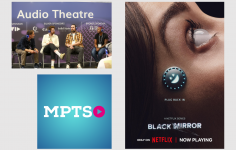The growing demand for foreign language dubbing

It’s going to be very difficult to write this article without using the tired phrase ‘monetizing content’. Or, worse still, ‘leveraging media assets’. Both of which are sooo five-years-ago. Perhaps it’s best to have ripped off the band-aid and got them both out of the way.
Problem is, there’s almost no better way of encapsulating the huge opportunity presented to content owners – and the audio professionals on whom they rely – by today’s media landscape.
Figures recently published by MESA (Media & Entertainment Services Alliance) suggest the localisation market in EMEA was worth $2bn in 2016, and is set to grow 8-10% by 2020. No surprise, given the proliferation of VOD platforms and the push to make new and back-catalogue content available worldwide, driving paid subscriptions in all territories.
Most encouragingly for the audio post production community; the trend in localisation is a move away from subtitling and towards dubbing.
Doubling Down on Dubbing
The age-old subtitling versus dubbing debate continues, but the dynamics are changing. Cost has always been a major factor in favour of subtitling, although traditionally the choice was made along cultural lines. Very generally speaking, countries with smaller populations and/or where there is a high level of english comprehension (e.g. The Netherlands, Denmark, the UK) would tend to subtitle their imports. More populous countries with more internationally recognised languages (France, Italy, Germany, Spain) would merit a dub. Indeed, Mussolini and Franco made dubbing compulsory by law in Italy and Spain respectively. This may originally have had something to do with censorship, of course, but the practice has persevered.
Today, however, there are a number of factors which have combined to shift the preference of content owners towards dubbing:
- Genre: Kids TV is a big driver for VOD subscriptions (how many of us parents can say they’ve never relied upon ‘the digital babysitter’). Subtitles present an obvious problem in this genre.
- Technology: Tablets and phones are simply too small to present subtitles big enough to be readable.
- Viewing habits: ‘Second Screen’ experiences and the clamour for social media ‘engagement’ mean that the TV screen itself isn’t always the focus of the viewer’s concentration.
The Opportunity for Audio Post Professionals
More content to dub, in more formats, for more territories hasn’t been met by an equal growth in supply of talent and studios. A bottleneck exists. In turn, the dubbing market seems a long way from being sewn-up; It remains very fragmented. There are a small handful of companies who can offer a one-stop, multi-lingual, managed service for localisation.
MESA’s research suggests that content owners in general will partner with one provider per territory. Benefitting from that studio’s proximity to, and knowledge of, local talent.

None of this is limited to TV. Whether it’s lower budget back-catalogue for VOD or the latest $250m tentpole Hollywood studio feature film; there’s a growing demand, an increasingly complex set of requirements, and an apparent lack of sufficient capacity in the audio post production market.
In subsequent articles in this series we’ll take a closer look at both ends of the spectrum. We’ll be talking to Ray Gillon about his work and the challenges posed in overseeing major movies for simultaneous worldwide release. We’ll also be looking at ZOOdubs, an innovative cloud-based initiative which enables mixers and studios to sign up and be paid for contributing their services to large-scale managed versioning projects.
If you haven’t already, Register Free on Resurface to receive a regular update on fresh news and console listings.



